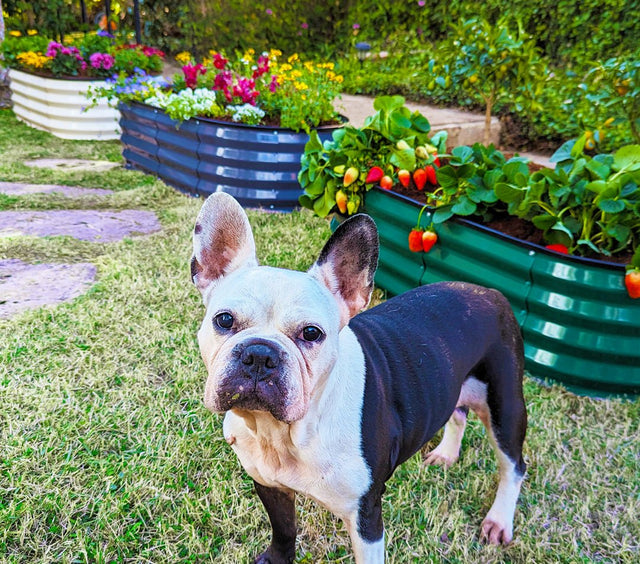Growing strawberries in your Plant & Plot Raised Garden Bed is a great way to enjoy fresh, delicious fruit while also making the most of your available space. In addition to their aesthetic appeal, strawberries are packed with health benefits. They are an excellent source of vitamin C, fiber, and antioxidants, making them a great choice for a healthy diet. The antioxidants in strawberries may also help improve cognitive function, memory, and mood, while the high fiber content can promote healthy digestion.
Here are the basic steps to grow strawberries in a raised garden bed:
- Climate and Site Selection: Strawberries are a cool-weather fruit, so it's best to plant them in early spring or late fall when the temperatures are cooler. They need at least six hours of direct sunlight every day and a soil temperature of 60-70°F. When selecting a site, choose a location that's protected from strong winds and has well-drained soil.
- Soil Preparation: Before planting strawberries, it's essential to prepare the soil. Strawberries prefer slightly acidic soil with a pH of 5.5-6.5. It's important to work in plenty of organic matter, such as compost or well-rotted manure, to improve soil fertility and drainage.
- Planting: You can plant strawberries from seed, but it's more common to plant them as bare-root plants, which are available from garden centers. You can also grow strawberries from runners, which are baby plants that grow from the mother plant. When planting, make sure the crown of the plant (where the leaves meet the roots) is level with the soil surface. Plant them about 12-18 inches apart to allow for growth and air circulation.
- Watering: Strawberries need consistent moisture to produce well. Water them deeply once or twice a week, depending on the weather. Avoid overhead watering, as it can promote fungal diseases.
- Mulching: Mulching is an essential part of growing strawberries. It helps to conserve moisture, suppress weeds, and keep the fruit clean. Straw, pine needles, or shredded leaves are good mulching materials. Apply a 2- to 3-inch layer around the plants, but keep the mulch from touching the crowns of the plants.
- Plant the strawberry seedlings or runners about 8-12 inches apart, ensuring that the crown of the plant is at soil level.
- Fertilizing: Strawberries are heavy feeders and require regular fertilization to produce well. Apply a balanced fertilizer, such as a 10-10-10 or 5-10-10 formula, once a month during the growing season. Be careful not to over-fertilize, as this can lead to excessive foliage growth at the expense of fruit production.
- Pest and Disease Control: Common pests that can affect strawberries include slugs, aphids, and spider mites. Diseases such as powdery mildew, verticillium wilt, and gray mold can also be problematic. To control pests and diseases, practice good garden hygiene, remove and destroy infected plants, and use organic pest control methods when necessary.
- Harvesting: Strawberries should be picked when they are fully ripe but still firm. Pick the fruit in the morning when it's cool, and handle it gently to avoid bruising. Remove any diseased or damaged berries, and use them immediately or freeze them for later use.
In conclusion, growing strawberries in your Plant & Plot Raised Garden Bed is a great way to enjoy fresh, delicious fruit, save money, and reap the health benefits of this superfood. Whether you're a seasoned gardener or a beginner, growing strawberries is a fun and rewarding experience that's well worth the effort. By following the proper care instructions and planting them in the right conditions, you can enjoy a bountiful harvest of delicious and nutritious strawberries throughout the growing season.
Happy gardening!
We’re here to help 24/7 if anything comes up.
More stories


